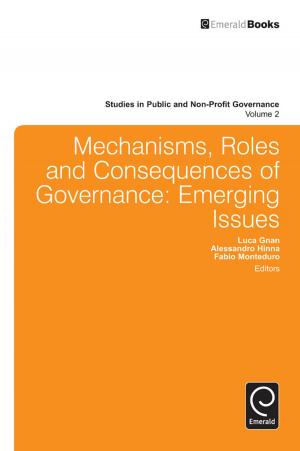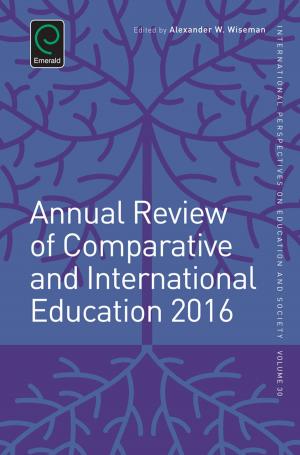Leadership and Public Sector Reform in Asia
Nonfiction, Social & Cultural Studies, Political Science, Politics, Economic Conditions, Government, Social Policy| Author: | ISBN: | 9781787434448 | |
| Publisher: | Emerald Publishing Limited | Publication: | April 6, 2018 |
| Imprint: | Emerald Publishing Limited | Language: | English |
| Author: | |
| ISBN: | 9781787434448 |
| Publisher: | Emerald Publishing Limited |
| Publication: | April 6, 2018 |
| Imprint: | Emerald Publishing Limited |
| Language: | English |
Present day knowledge about public sector reforms in Asia is quite scattered and seldom focuses on the challenges of leadership. This edited collection seeks to address this issue by presenting country cases that reflect the great diversity of the region.
Home to roughly one-third of the world’s population, Asia-Pacific governments typically play leading roles in social and economic development, yet by measures of expenditures or civil servants per capita, most are among the smaller ones in the world. These regimes include democracies, one-party states and unstable systems; there is a broad range of cultural legacies including Confucian, Buddhist, and Western, and vastly different levels of economic development; the region includes some of the very least corrupt countries and those with high corruption levels; it includes the world’s most populous country, as well as some of the smallest.
Public sector reforms are very relevant to these countries and their leaders. In Asia, a strong government is invaluable and public sector reforms are relevant to helping modern states meet their goals and performance. This collection explores what is known about these reforms with an eye towards helping leaders responsible for reforms. Clearly, there is very large variation; some Asia-Pacific countries are leading in public sector reforms, while others are not, and this book also seeks to further our understanding what leaders might need to do to be successful.
Present day knowledge about public sector reforms in Asia is quite scattered and seldom focuses on the challenges of leadership. This edited collection seeks to address this issue by presenting country cases that reflect the great diversity of the region.
Home to roughly one-third of the world’s population, Asia-Pacific governments typically play leading roles in social and economic development, yet by measures of expenditures or civil servants per capita, most are among the smaller ones in the world. These regimes include democracies, one-party states and unstable systems; there is a broad range of cultural legacies including Confucian, Buddhist, and Western, and vastly different levels of economic development; the region includes some of the very least corrupt countries and those with high corruption levels; it includes the world’s most populous country, as well as some of the smallest.
Public sector reforms are very relevant to these countries and their leaders. In Asia, a strong government is invaluable and public sector reforms are relevant to helping modern states meet their goals and performance. This collection explores what is known about these reforms with an eye towards helping leaders responsible for reforms. Clearly, there is very large variation; some Asia-Pacific countries are leading in public sector reforms, while others are not, and this book also seeks to further our understanding what leaders might need to do to be successful.















